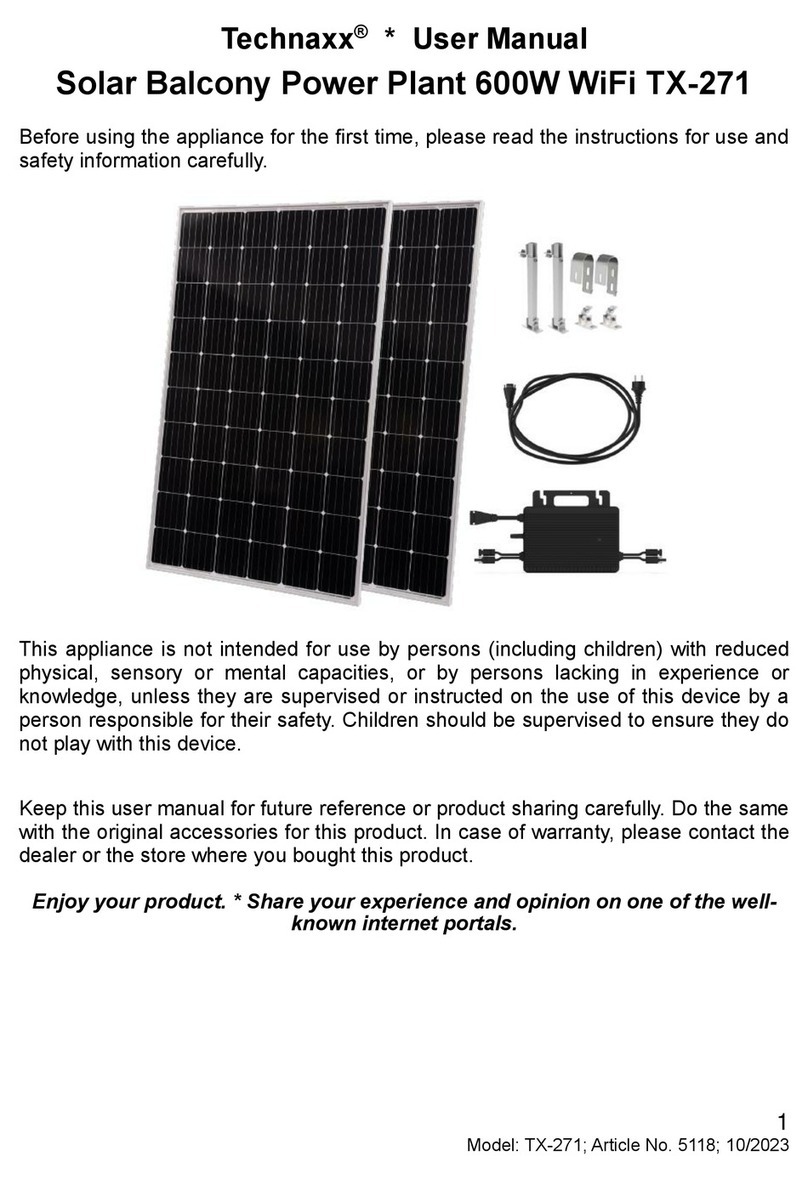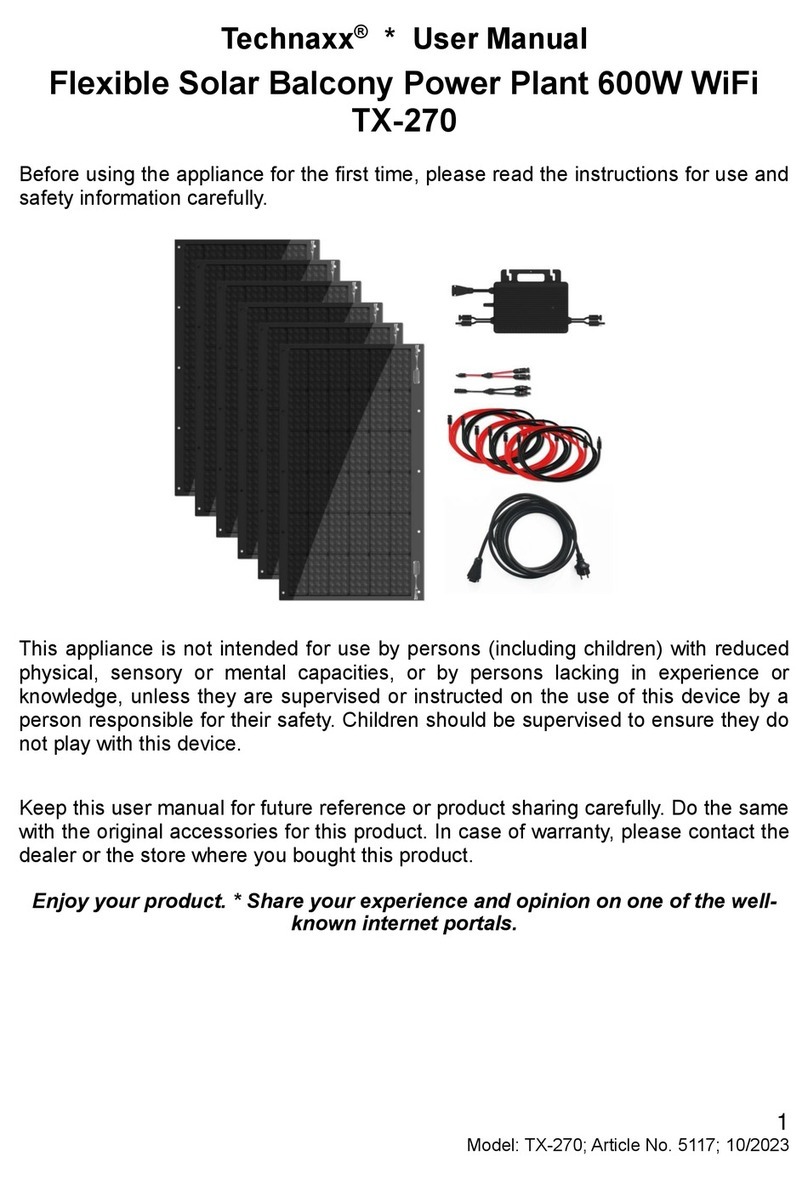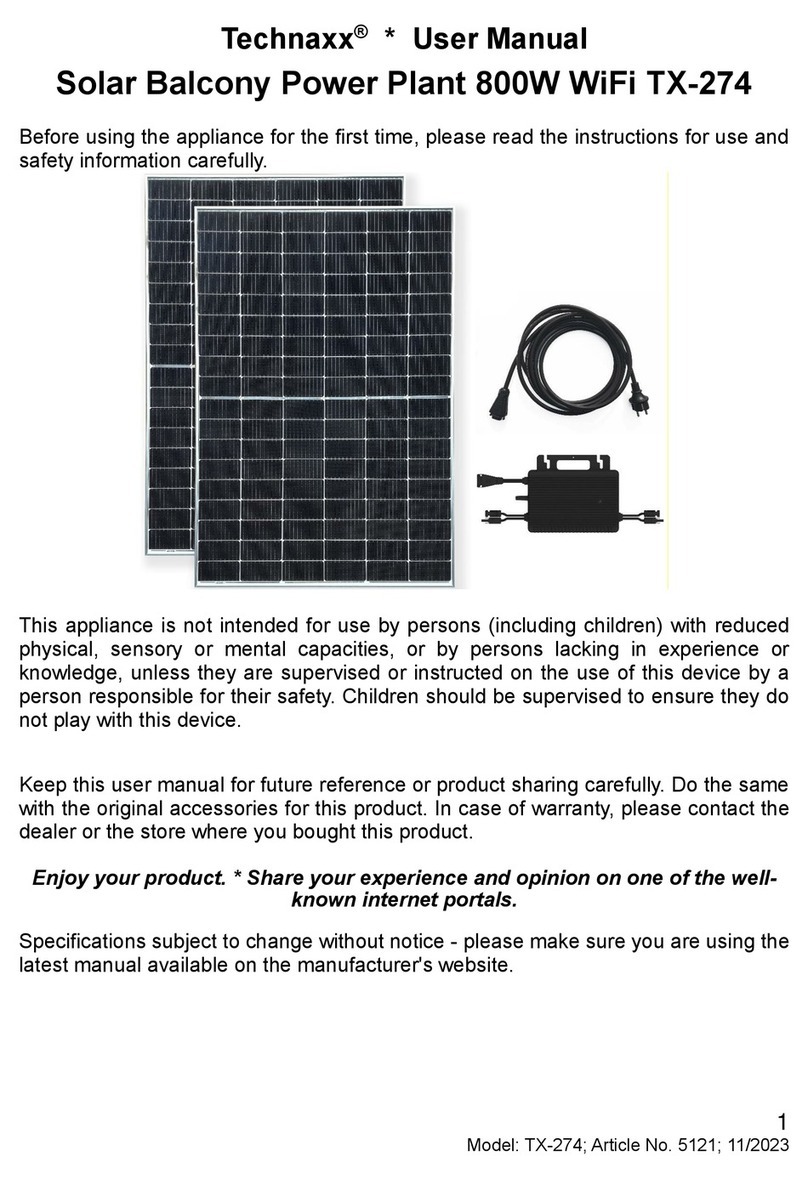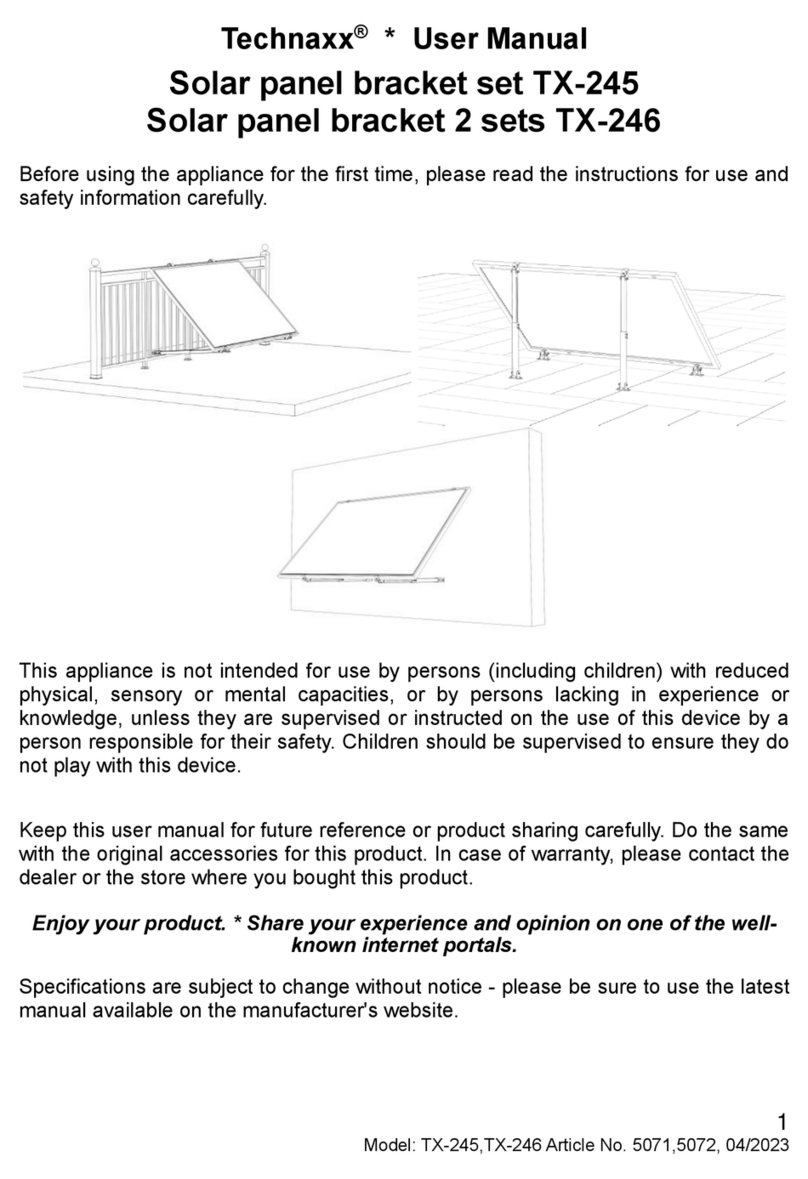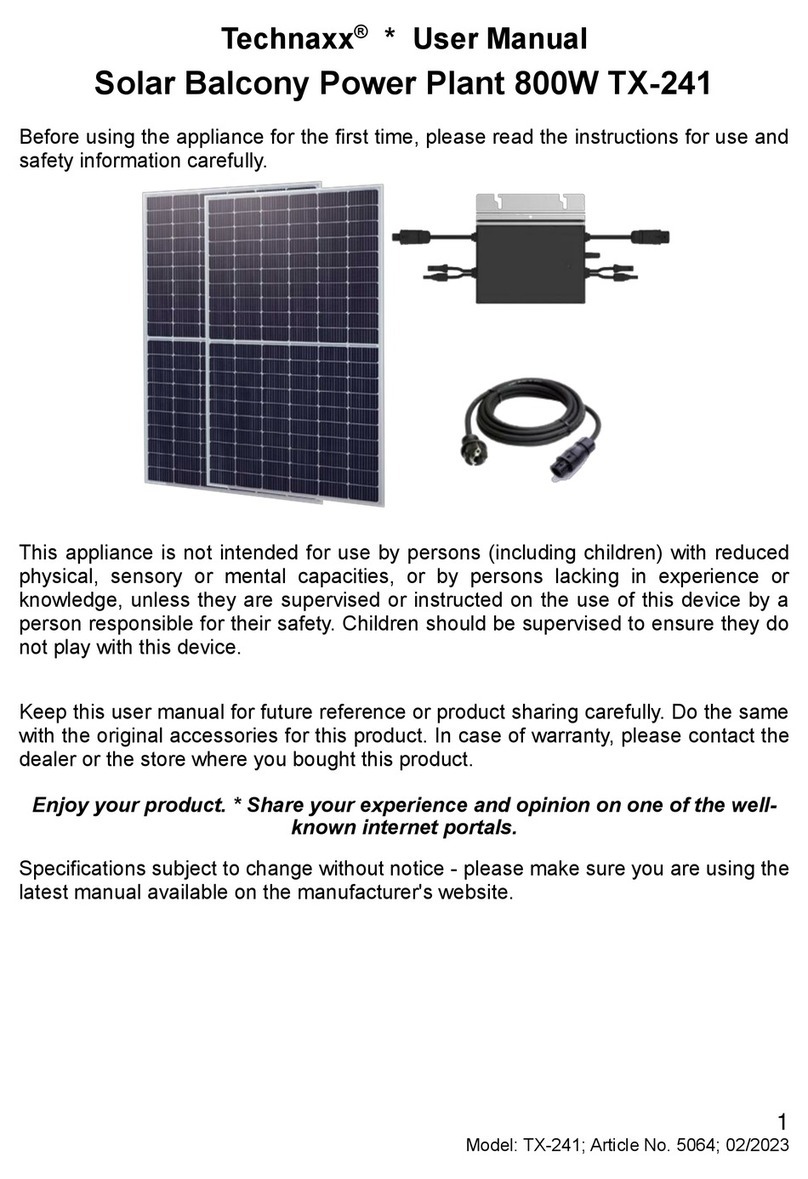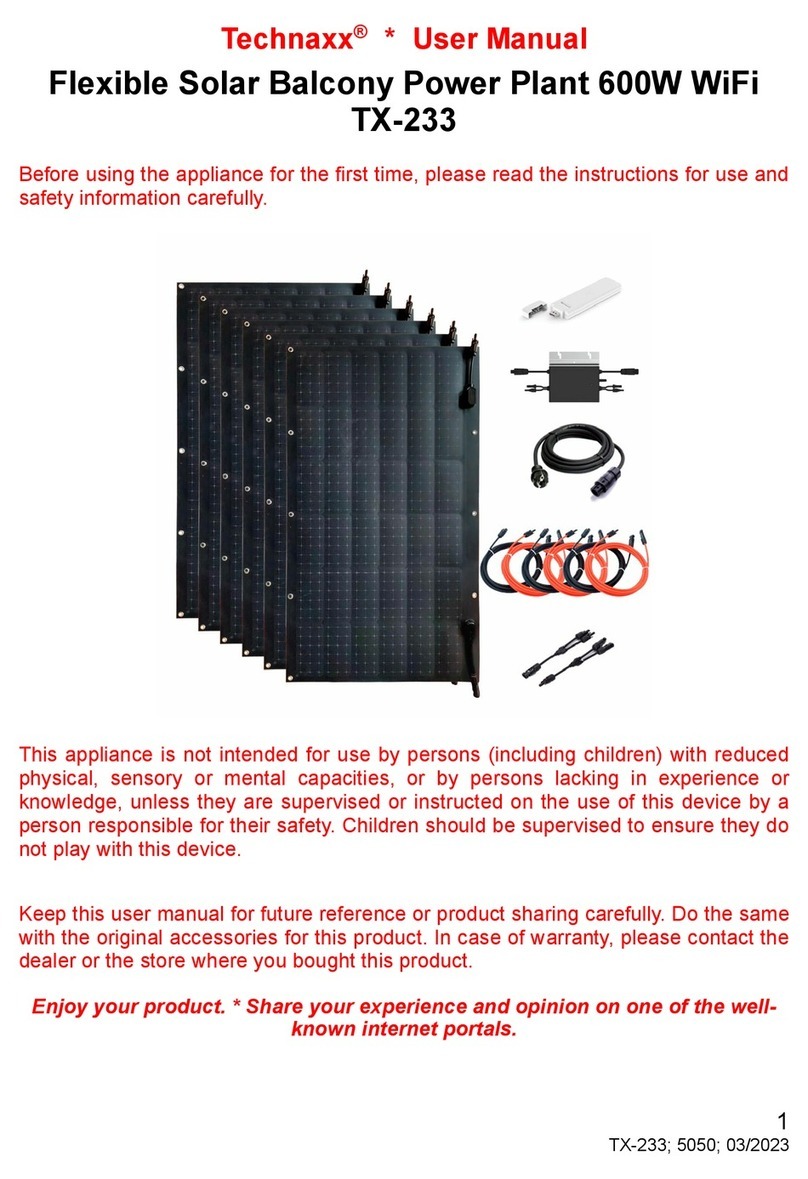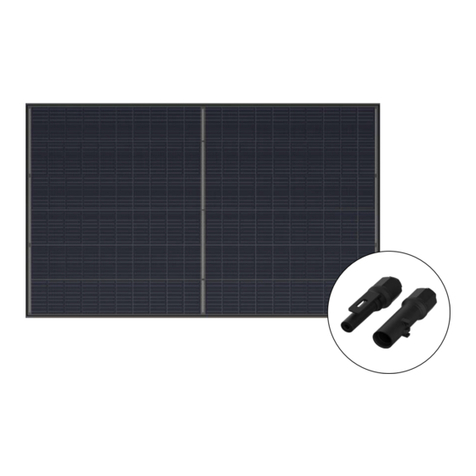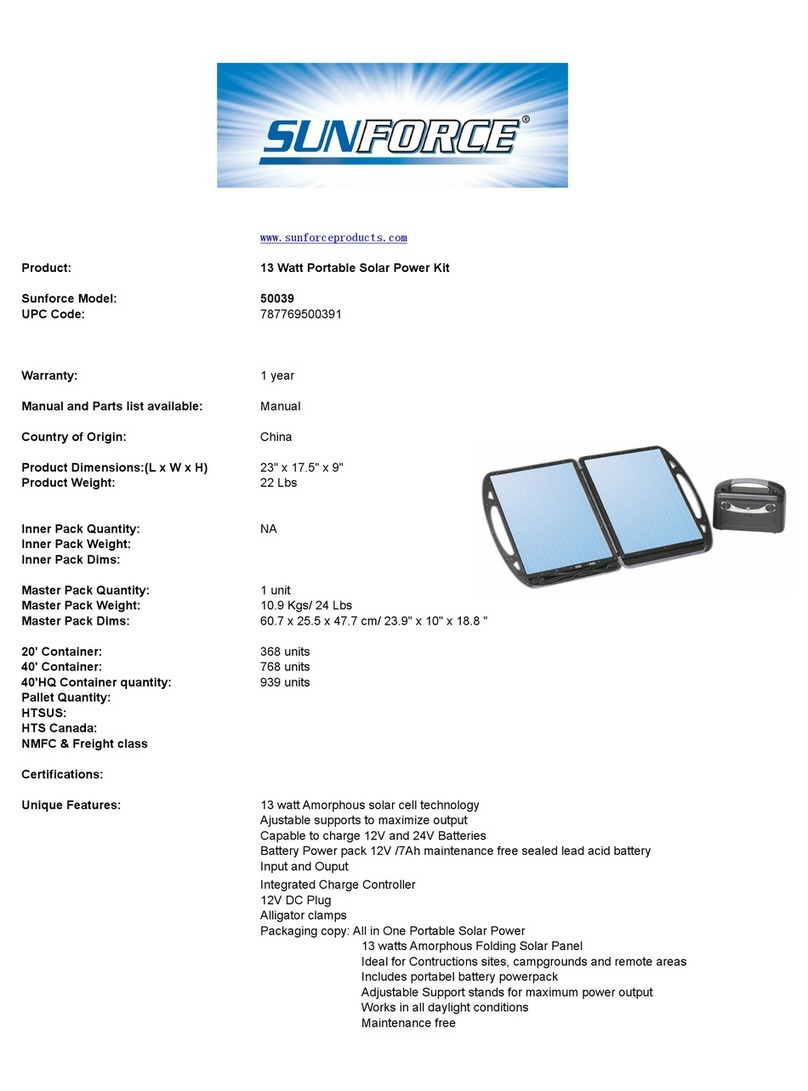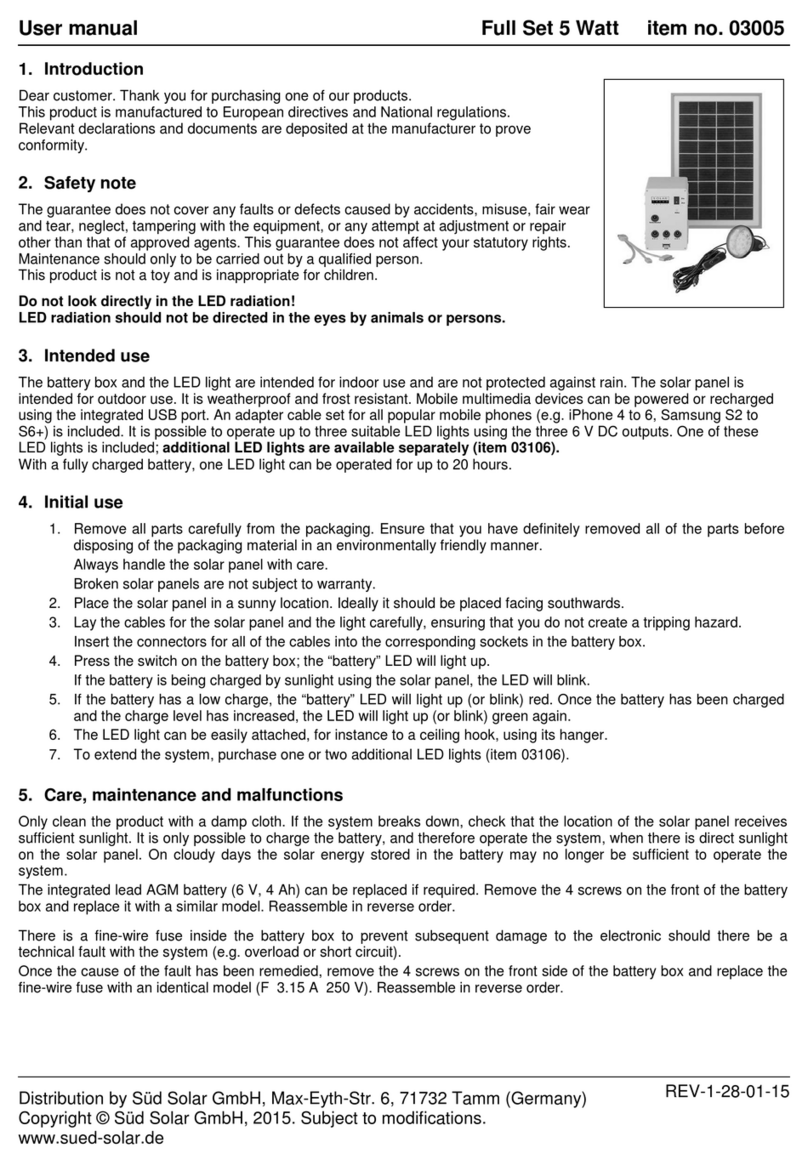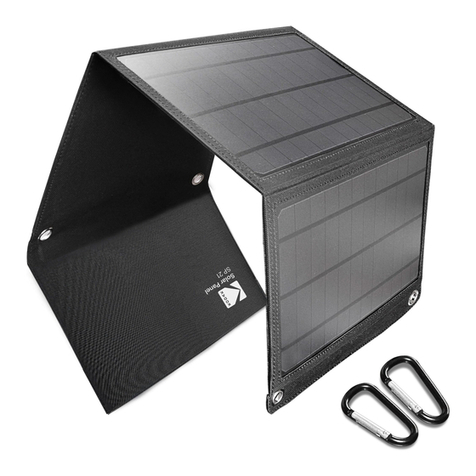4
Model: TX-203,TX-204,TX-228; Article No. 5021,5023,5040; 10/2022
Note
⚫ In principle, the installation should only be carried out by qualified personnel. For
installations of more than 600 W, the installation must be carried out by a specialist
electrical company! Please also observe the requirements of your network operator
and local legal regulations.⚫ Only use the product for purposes due to its intended
function ⚫ Do not damage the product. Following cases may damage the product:
Incorrect voltage, accidents (including liquid or moisture), misuse or abuse of the
product, faulty or improper installation, mains supply problems including power spikes
or lightning damage, infestation by insects, tampering or modification of the product
by persons other than authorized service personnel, exposure to abnormally corrosive
materials, insertion of foreign objects into the unit, used with accessories not
preapproved. ⚫ Refer to and heed all warnings, precautions and safety instructions
in the user manual.
Safety instructions
⚫ Read the user manual carefully. They contain important information on the use,
safety and maintenance of the device. Keep the user manual in a safe place and pass
them on to subsequent users if necessary.
⚫ Before installing or using the Solar Balcony Power Plant, please read all instructions
and warnings in the technical documentation, on the microinverter and on the solar
modules.
⚫ The device may only be used for its intended purpose in accordance with this user
manual.
⚫ Observe the safety instructions during use.
⚫ Before commissioning, check the device and its connecting cable as well as
accessories for damage. Do not use the device if it shows visible damage.
⚫ Operate the device only from household power sources. Check whether the mains
voltage specified on the type plate corresponds to that of your mains supply.
⚫ Perform all electrical installations in accordance with local regulations (including
VDE).
⚫ When installing and operating the plug-in photovoltaic system, observe the national
legal regulations and the connection conditions of the grid operator.
In particular, DIN VDE V 0100-551-1 (VDE V 0100-551-1), VDE AR-N 4105:2018-11,
DIN VDE 0100-712, DIN VDE 0100-410 and DIN VDE V 0628-1 (VDE V 0628-1).
⚫ Note the information on determining the line reserve at the end of these operating
instructions.
⚫ Note that the housing of the micro inverter is a heat sink and can reach a
temperature of 80 degrees Celsius. To reduce the risk of burns, do not touch the
housing of the micro inverter.
⚫ Do not squeeze the power cord, do not pull it over sharp edges or hot surfaces; do
not use the power cord for carrying.
⚫ If the power cord of this device is damaged, it must be replaced by the manufacturer
or its customer service or a similarly qualified person in order to avoid hazards.
⚫ The appliance is intended for household or similar use only. It must not be used for
commercial purposes!

